Boils On Inner Thighs: 12 Natural Remedies For Quick Relief
Soothe those painful bumps on your inner thighs with a few ingredients from your pantry.

Image: Shutterstock
You probably want to get rid of the boils on your inner thighs as soon as you can because of how strange they look and how they trigger your desire to pick at them. But wait! Don’t pick or puncture them as that can worsen things!
Infection by the bacterium Staphylococcus aureus in the hair follicles beneath the skin causes inflammation, which leads to boils on the inner thighs. These boils are also known as furuncles, and they may itch and release pus. In this post, we will go through the causes of boils on the inner thighs, some natural treatments for them, and simple strategies to prevent them. Keep reading!

Click here to view an enlarged version of this infographic.
In This Article
What Causes Boils On The Inner Thighs?
Human beings generally carry the bacteria Staphylococcus aureus on their skin surface. When there is a cut or scrape on the skin, these bacteria gain access to the hair follicles. They settle down and start multiplying in the hair follicles, causing infection. This gives rise to skin conditions such as boils in areas like your inner thigh. A boil may develop into an abscess filled with pus. Sometimes, weakened immune systems and conditions like diabetes make people susceptible to developing boils (1). Another condition that may cause boils to appear on the inner thighs is Hidradenitis Suppurativa.
Anna Misztela, Licensed Esthetician, says, “Tight clothing and excessive friction can irritate the skin, leading to the development of boils in sensitive areas like the inner thighs. Inadequate hygiene can contribute to bacteria buildup, increasing the likelihood of infection and recurrence. Adopting good hygiene practices, wearing loose-fitting clothes, and maintaining a healthy diet can help reduce the frequency of boils in these areas.”
Andy, who writes a blog called Real Stories Of Fat Prejudice in Health Care, recounted her struggle with frequent heat rashes or boils on her inner thighs. She writes, “If anyone out there has HS and has been told it’s because you’re overweight, you were told wrong. Skinny people get HS. There are a lot of us fatties with it, but it’s not caused by being overweight. It’s also common to be told that HS is caused by poor hygiene (i).”

It is important to recognize the symptoms of a boil on the inner thigh to treat it promptly. Scroll down to learn about them.
Key Takeaways
- Inner thigh boils may be caused by bacteria such that live in the inner layer of the skin or can be contacted via physical contact.
- People with weak immunity or diabetes might be at an increased risk of developing boils.
- Tea tree oil, garlic, and echinacea are some of the ingredients that may help treat the boil.
- To prevent inner thigh boils, maintain good hygiene.
- Use a wide, dry bandage to keep the wound of a drained boil dry to avoid skin irritation.
Symptoms Of Boils On The Inner Thighs
Boils on the inner thighs may have the following symptoms:
- Redness
- Inflammation
- Pain and tenderness
- Itchiness
- Discomfort
- Pus
 Quick Tip
Quick TipWe will now discuss a few simple natural remedies that can help you manage boils on the inner thigh.
Disclaimer: Home remedies are not a substitute for professional medical care. If your boil is large, painful, or not improving with home treatment, see a doctor. Do not attempt to pop or squeeze a boil, as this can worsen the infection. If you have any underlying health conditions, such as diabetes or a weakened immune system, talk to your doctor before using home remedies.
12 Effective Natural Remedies For Boils On The Inner Thighs
- Tea Tree Oil
- Turmeric
- Epsom Salt
- Apple Cider Vinegar
- Garlic
- Onion
- Aloe Vera
- Vinegar
- Black Seed Oil
- Echinacea
- Neem
- Potatoes
1. Tea Tree Oil
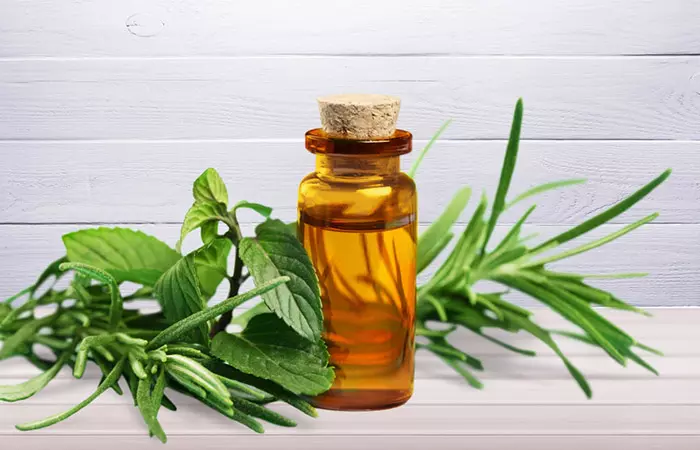
The antimicrobial activity of tea tree oil can combat the bacteria that causes an infection in the hair follicle. This essential oil also aids in reducing the scar that the boils leave behind (2).
You Will Need
- 1-3 drops of tea tree oil
- 1 tablespoon of coconut oil
- Cotton swab
What You Have To Do
- Add a few drops of tea tree oil to a tablespoon of coconut oil and mix well.
- Dip the cotton swab in the mixture and apply it to the boil.
- Make sure the used cotton swab doesn’t touch any uninfected part of the body and dispose of it.
How Often You Should Do This
Reapply a few times during the day, using a fresh cotton swab every time.
Limitations
Tea tree oil can cause irritation or allergic reactions in some individuals if not diluted properly. It also requires multiple applications for visible results.
2. Turmeric
According to a study, the curcumin in turmeric showed a high potential to act as an antibiotic against various bacterial strains(3). Ginger possesses anti-inflammatory properties which in combination with turmeric can help heal the boil and reduce pain and redness. A study published in Wound Repair and Regeneration investigated the effects of a combination of curcumin (10%) and ginger extract (3%) on wound healing in corticosteroid-damaged skin using hairless rats. The rats were pre-treated with either curcumin, ginger extract, or their combination for 21 days, followed by a 15-day application of a corticosteroid. After inducing superficial wounds, researchers observed that the combination treatment significantly accelerated healing compared to corticosteroid-treated skin alone. The combined extract enhanced collagen production and reduced enzymes that hinder healing, with no signs of skin irritation during or after treatment. The findings suggest that this botanical combination may be a promising approach to improving skin health and managing non-healing wounds in compromised skin (4).
You Will Need
- 1 tablespoon turmeric powder
- 1/2 tablespoon crushed ginger root
- Water
What You Have To Do
- Mix the turmeric powder and crushed ginger with water to form a paste. You can also use coconut oil instead of water to make the paste.
- Wash your hands thoroughly and apply this paste with your fingers on the infected area. Let it dry.
- Wash the area after about 15 minutes.
How Often You Should Do This
Do this 2-3 times a day for quick treatment of the boil.
Limitations
It can stain the skin and clothes. Also, it may not be effective for deep or severe boils.
3. Epsom Salt
Warm water is relaxing and great for sore thighs. It also aids blood circulation and helps boils erupt (5). Epsom salt (magnesium sulfate) exhibits osmotic action and inhibits the growth of bacteria responsible for boils (6).
You Will Need
- 2 tablespoons Epsom salt
- A bowl of hot water
- Soft cloth
What You Have To Do
- Add Epsom salt to the hot water and mix it well.
- Soak the cloth in this water. Wring out excess water and place the cloth on the affected area.
- Leave it on until the cloth comes down to room temperature.
- Alternatively, you can fill a bathtub with warm water and mix a cup of Epsom salt in it. Soak in it for a relaxing experience.
How Often You Should Do This
Repeat this several times during the day.
Limitations
It requires frequent application for noticeable effects. Epsom salt may not be a standalone remedy; may need to be combined with other treatments.
4. Apple Cider Vinegar

Apple cider vinegar is a well-known antimicrobial agent. It can help kill the bacteria that cause infection in the hair follicles and restores the pH level of the skin (7).
You Will Need
- Apple cider vinegar
- Cotton pad
What You Have To Do
- Soak a cotton pad in the ACV, squeeze out the excess, and place it on the boil.
- Leave it on for about 10 minutes.
How Often You Should Do This
Repeat this a couple of times during the day. Use a fresh cotton pad every time.
Limitations
ACV can cause a burning sensation, especially on sensitive or broken skin. Additionally, prolonged use may dry out the skin.
5. Garlic
Garlic juice possesses antibacterial and anti-inflammatory properties due to the presence of sulfur-rich compounds (8). This makes it suitable to manage the symptoms of inner thigh boils.
You Will Need
2-3 garlic cloves
What You Have To Do
- Crush the garlic and squeeze it to extract the juice.
- Apply this on the boil on your inner thigh and let it dry.
- Do not rinse it off. Let the garlic juice work on the boil.
How Often You Should Do This
Apply this 2 times a day.
Limitations
Garlic has a strong smell that can be off-putting. It may cause irritation or a burning sensation if applied undiluted.
6. Onion
Like garlic, onion contains sulfur-rich compounds with antimicrobial properties. A study published in Pharmazie evaluated the antimicrobial properties of garlic (Allium sativum) and onion (Allium cepa) extracts. The research tested their effects on various Gram-positive and Gram-negative bacteria and fungi, revealing significant growth inhibition in most organisms (9). Onion also contains flavonoids and antioxidants that heal and protect the skin (10).
You Will Need
- Onion slices
- Surgical tape
What You Have To Do
- Place the onion slice on the affected area and secure it in place with surgical tape.
- Leave it on for a few hours.
How Often You Should Do This
Replace the slice with a fresh one every few hours.
Limitations
It requires frequent replacement of onion slices, which can be inconvenient. Onions may not penetrate deep boils effectively.
7. Aloe Vera

Aloe vera is an effective home remedy for boils as it can provide relief from pain and speed up the healing process. It also possesses antiseptic properties that can combat any infection in the affected area (11).
You Will Need
Aloe vera gel
What You Have To Do
- Snap a leaf in half and collect the sap.
- Apply aloe gel on those painful bumps and leave it on.
- Alternatively, you can also use aloe gel bought at a drugstore on the boils.
How Often You Should Do This
Repeat this 2-3 times a day.
Limitations
The effectiveness of this method can vary depending on the severity of the boil. Additionally, store-bought aloe vera gels may contain additives that irritate sensitive skin.
8. Vinegar
Vinegar works as an antimicrobial agent (12). Lemon juice and honey possess antimicrobial properties (13), (14). Honey also acts as an emollient and soothes the skin.
You Will Need
- 1 teaspoon white vinegar
- 1/2 teaspoon honey
- 1/2 teaspoon lemon juice
What You Have To Do
- Mix the ingredients and apply the mixture on the boils.
- Wait 30-40 minutes after application and wash with warm water.
How Often You Should Do This
Apply this paste 2 times a day.
Limitations
Vinegar’s acidity can irritate broken skin or open wounds. It may not work quickly for severe infections.
9. Black Seed Oil
Black seed oil
is derived from the Nigella sativa plant and has antimicrobial and anti-inflammatory properties (15). Thus, black seed oil can be useful in treating inner thigh boils.
You Will Need
- 1/2 teaspoon black seed oil
- A cup of hot or cold beverage
What You Have To Do
Add the oil to the beverage and drink it. Fruit juices or green tea are the best options for the beverage.
How Often You Should Do This
Drink this 2 times a day.
Limitations
There is limited research that supports its effectiveness for boils specifically. Also, results may take time and vary between individuals.
10. Echinacea

Echinacea is known for its immunity-boosting properties, which enhance the body’s response to different infections (16). It also possesses antimicrobial properties that can help fight the infection that leads to boils by eliminating harmful bacteria from the body.
You Will Need
- 1-2 tablespoons echinacea herb
- A cup of hot water
What You Have To Do
- Add the echinacea to the cup of water and let the herb steep for a few minutes.
- Strain and drink this herbal tea.
How Often You Should Do This
Drink 2-3 cups a day.
Limitations
It requires consistent consumption to show noticeable effects. Echinacea may interact with certain medications, such as immunosuppressants.
11. Neem
Neem has antimicrobial properties and anti-inflammatory properties (17). These can help reduce swelling and associated pain around the boil.
You Will Need
- A handful of fresh neem leaves
- Water
- Gauze or bandage
What You Have To Do
- Crush and grind the neem leaves with water to get a smooth paste.
- Apply a layer of this on the boil and cover with gauze.
- Change the dressing after a couple of hours using a fresh piece of gauze.
How Often You Should Do This
Do this until the boil heals.
Limitations
This method has a time-consuming application process. It can stain skin and clothes.
12. Potatoes
Potatoes
possess antibacterial properties. Scientists have identified several compounds in potato tubers that act as antibiotics and antimicrobial agents (18). These properties may make potato a suitable remedy for inner thigh boils.
You Will Need
- 1 small raw potato
- Cotton ball
What You Have To Do
- Peel and grate the potato. Squeeze out its juice.
- Soak a cotton ball in the potato juice and apply it liberally to the boil. Let the boil be covered in the potato juice for a few minutes.
- Rinse with clean water for easy drainage of the pus.
How Often You Should Do This
Repeat this 3-4 times a day.
Limitations
Effects may be mild and take time to show. Frequent application is required for consistent results.
If the boil becomes more painful or keeps returning even after using these home remedies, it is important to seek medical help. The same needs to be done if you develop a fever alongside it. In these cases, your doctor may suggest other treatment options. Scroll down to know more.
Other Treatments For Boils On The Inner Thigh
- Incision and Drainage (I&D): A healthcare provider may perform an I&D procedure to handle a painful boil. They make a small incision to drain pus, relieve pressure, and expedite healing.
- Antibiotics: In case of systemic symptoms or recurrent boils, doctors may prescribe antibiotics to target the underlying bacterial infection causing the boils.
- Pain Medication: Over-the-counter or prescription pain relievers may alleviate the discomfort associated with boils.
- Wound Care: Maintaining proper wound care is crucial. Clean the affected area with an antiseptic solution, apply an antibiotic ointment, and cover it with a sterile bandage to prevent aggravating the infection and promote healing.
- Warm Compresses: Apply a warm, moist compress post-drainage to help ease pain and assist in the healing process.
There are a few prevention tips to prevent the occurrence of inner thigh boils as it is important to practice good hygiene. Know them from the next section.
Prevention Tips
- Do not share personal items, such as razors and other such items that may have come in contact with others.
- Wash your hands thoroughly several times a day.
- Items and belongings, such as towels, compresses, and any clothing that is likely to come in contact with the affected area, must be washed properly.
- Use soap, hot water, and a hot dryer while washing or rinsing your personal items of clothing.
- Keep the wound of a drained boil covered with a dry bandage until it heals. You could also use a wide bandage to prevent irritation from chafing.
- Keep the boil clean and dry by changing the bandages frequently.
 Quick Tip
Quick TipInfographic: Other Home Remedies To Get Rid Of Boils On Inner Thighs
Boils on your inner thighs can be painful. Factors like diabetes and a weakened immune system can increase the risk of developing these boils. But worry not – we have got you covered. We have created a comprehensive list of the other ingredients you can use to soothe those pesky boils on your thighs. Check out the infographic below to know more.
Some thing wrong with infographic shortcode. please verify shortcode syntax
A bacterial infection of the hair follicles lying beneath the skin leads to inflammation and causes boils on various body parts, including the inner thigh. A skin abscess, commonly known as boil, on the inner thigh, can be extremely uncomfortable and should be treated right away to avoid further spread of the infection and other complications. Home remedies to cure boils include tea tree oil, turmeric, aloe vera, Epsom salt, vinegar, neem, potatoes, black seed oil, and echinacea. To prevent boils from developing, treat cuts and scrapes immediately as wounds serve as the entry point for the bacteria. In addition, to prevent the spread of the infection, avoid sharing personal use items such as towels, shorts, and razors.
Frequently Asked Questions
Can a boil heal without draining?
According to Dr. Anna Chacon, MD, FAAD, a double board-certified dermatologist, “Boils normally need to open and drain in order to heal. This usually occurs within two weeks.”
How do you know when a boil is ready to drain?
Dr. Chacon says, “It will squish down. Then a huge pimple appears on the skin just above the boil. The boil has reached its “peak” and is now ready to be drained.”
Can boils be caused by poor hygiene?
Yes, poor hygiene may cause boils, especially if you have cuts and scrapes, a weakened immune system or high blood sugar.
How do you bring a boil to a head overnight?
It is generally not possible to bring a boil to a head overnight, but the quickest way to bring a boil to a head is to apply heat compress for 10-15 minutes multiple times a day.
What STD causes boils on the inner thigh?
Boils are a result of a bacterial infection and not an STD. However, you may get boils from a sexual partner who has a leaky boil. Genital herpes is an STD that may cause itchy and painful blisters on the inner thighs.
How long do boils last?
Boils generally take up to two weeks to heal.
What is the hard stuff inside a boil?
The hard stuff inside a boil is its core that is filled with accumulated pus and sometimes damaged tissue. It gets softer as it matures.
Illustration: Home Remedies To Get Rid Of Boils On The Inner Thighs

Image: Stable Diffusion/StyleCraze Design Team
Boils on the inner thighs can be caused by bacteria, friction, or sweat, and they can be extremely uncomfortable. Watch this video for expert treatment and prevention tips.
Personal Experience: Source
StyleCraze's articles are interwoven with authentic personal narratives that provide depth and resonance to our content. Below are the sources of the personal accounts referenced in this article.
i. Pimples/boils on inner thighs/waist/etc? It’s not your fat, it could be Hidradenitis Suppurativa;https://fathealth.wordpress.com/2009/09/11/pimplesboils-on-inner-thighswaistetc-its-not-your-fat-it-could-be-hidradenitis-suppurativa/
References
Articles on StyleCraze are backed by verified information from peer-reviewed and academic research papers, reputed organizations, research institutions, and medical associations to ensure accuracy and relevance. Read our editorial policy to learn more.
- Boils and carbuncles: Overview, Institute for Quality and Efficiency in Healthcare, US National Library of Medicine, National Institutes of Health.
https://www.ncbi.nlm.nih.gov/books/NBK513141/ - Melaleuca alternifolia (Tea Tree) Oil: a Review of Antimicrobial and Other Medicinal Properties, Clinical Microbiology Review, US National Library of Medicine, National Institutes of Health.
https://www.ncbi.nlm.nih.gov/pmc/articles/PMC1360273/ - Antibacterial Action of Curcumin against Staphylococcus aureus: A Brief Review, Journal of Tropical Medicine, US National Library of Medicine, National Institutes of Health.
https://www.ncbi.nlm.nih.gov/pmc/articles/PMC5124450/ - A COMBINATION OF CURCUMIN AND GINGER EXTRACT IMPROVES ABRASION WOUND HEALING IN CORTICOSTEROID-DAMAGED HAIRLESS RAT SKIN, Wound Repair Regeneration, US National Library of Medicine, National Institutes of Health.
https://www.ncbi.nlm.nih.gov/pmc/articles/PMC2819156/ - Impact of hydrotherapy on skin blood flow: How much is due to moisture and how much is due to heat?, Physiotherapy Theory and Practice, ResearchGate.
https://www.researchgate.net/publication/41000046_Impact_of_hydrotherapy_on_skin_blood_flow_How_much_is_due_to_moisture_and_how_much_is_due_to_heat - CARBUNCLE AND ITS TREATMENT BY MAGNESIUM SULPHATE, BMJ, US National Library of Medicine, National Institutes of Health.
https://www.ncbi.nlm.nih.gov/pmc/articles/PMC2304168/?page=1 - Antimicrobial activity of apple cider vinegar against Escherichia coli, Staphylococcus aureus and Candida albicans; downregulating cytokine and microbial protein expression, Scientific Reports, US National Library of Medicine, National Institutes of Health.
https://www.ncbi.nlm.nih.gov/pmc/articles/PMC5788933/ - Garlic: a review of potential therapeutic effects, Avicenna Journal of Phytomedicine, US National Library of Medicine, National Institutes of Health.
https://www.ncbi.nlm.nih.go/pmc/articles/PMC4103721/ - The antimicrobial activity of garlic and onion extracts, Die Pharmacy, US National Library of Medicine, National Institutes of Health.
https://pubmed.ncbi.nlm.nih.gov/6669596/ - Comparison of antioxidant activities of onion and garlic extracts by inhibition of lipid peroxidation and radical scavenging activity, Food Chemistry, ScienceDirect.
https://www.sciencedirect.com/science/article/pii/S0308814602004764 - ALOE VERA: A SHORT REVIEW, Indian Journal of Dermatology, US National Library of Medicine, National Institutes of Health.
https://www.ncbi.nlm.nih.gov/pmc/articles/PMC2763764/ - Vinegar: Medicinal Uses and Antiglycemic Effect, Medscape General Medicine, US National Library of Medicine, National Institutes of Health.
https://www.ncbi.nlm.nih.gov/pmc/articles/PMC1785201/ - Phytochemical, antimicrobial, and antioxidant activities of different citrus juice concentrates, Food Science & Nutrition, US National Library of Medicine, National Institutes of Health.
https://www.ncbi.nlm.nih.gov/pmc/articles/PMC4708628/ - Medicinal and cosmetic uses of Bee’s Honey – A review, AYU, US National Library of Medicine, National Institutes of Health.
https://www.ncbi.nlm.nih.gov/pmc/articles/PMC3611628/ - A review on therapeutic potential of Nigella sativa: A miracle herb, APJTCB, US National Library of Medicine, National Institutes of Health.
https://www.ncbi.nlm.nih.gov/pmc/articles/PMC3642442/ - Applications of the Phytomedicine Echinacea purpurea (Purple Coneflower) in Infectious Diseases, Journal of Biomedicine and Biotechnology, US National Library of Medicine, National Institutes of Health.
https://www.ncbi.nlm.nih.gov/pmc/articles/PMC3205674/ - The antimicrobial activity of Azadirachta indica, Mimusops elengi, Tinospora cardifolia, Ocimum sanctum and 2% chlorhexidine gluconate on common endodontic pathogens: An in vitro study, European Journal of Dentistry, US National Library of Medicine, National Institutes of Health.
https://www.ncbi.nlm.nih.gov/pmc/articles/PMC4054046/ - Protease Inhibitors from Plants with Antimicrobial Activity, International Journal of Molecular Sciences, US National Library of Medicine, National Institutes of Health.
https://www.ncbi.nlm.nih.gov/pmc/articles/PMC2705521/
Read full bio of Dr. Millie Lytle
- Anna is a licensed esthetician and the founder and owner of Beauty and Cutie®, a skin care brand from New York. Her interest in nutrition analysis and beauty propelled her to obtain a certification in Nutrition Science from the Stanford Center for Health Education. She later went on to develop and successfully market her product to improve the health of one's hair, skin, and nails. Anna’s holistic approach to safe, non–toxic yet effective products along with her understanding of ingredients give her the ability to educate women all around the world about the importance of clean beauty. She has been featured as a special guest in mzines, articles, podcasts, and multiple radio shows.
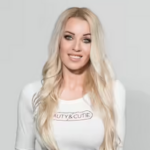 Anna is a licensed esthetician and the founder and owner of Beauty and Cutie®, a skin care brand from New York. Her interest in nutrition analysis and beauty propelled her to obtain a certification in Nutrition Science from the Stanford Center for Health Education. She later went on to develop and successfully market her product to improve the health of one's hair, skin, and nails. Anna’s holistic approach to safe, non–toxic yet effective products along with her understanding of ingredients give her the ability to educate women all around the world about the importance of clean beauty. She has been featured as a special guest in mzines, articles, podcasts, and multiple radio shows.
Anna is a licensed esthetician and the founder and owner of Beauty and Cutie®, a skin care brand from New York. Her interest in nutrition analysis and beauty propelled her to obtain a certification in Nutrition Science from the Stanford Center for Health Education. She later went on to develop and successfully market her product to improve the health of one's hair, skin, and nails. Anna’s holistic approach to safe, non–toxic yet effective products along with her understanding of ingredients give her the ability to educate women all around the world about the importance of clean beauty. She has been featured as a special guest in mzines, articles, podcasts, and multiple radio shows. - Dr. Anna Chacon, MD, FAAD, is a double board-certified dermatologist with over 7 years of experience. She has authored many peer-reviewed articles and managed clinical research studies during her fellowship. She completed her medical school in the PLME (Program of Liberal Medical Education) at Brown University.
 Dr. Anna Chacon, MD, FAAD, is a double board-certified dermatologist with over 7 years of experience. She has authored many peer-reviewed articles and managed clinical research studies during her fellowship. She completed her medical school in the PLME (Program of Liberal Medical Education) at Brown University.
Dr. Anna Chacon, MD, FAAD, is a double board-certified dermatologist with over 7 years of experience. She has authored many peer-reviewed articles and managed clinical research studies during her fellowship. She completed her medical school in the PLME (Program of Liberal Medical Education) at Brown University.
Read full bio of Kushneet Kukreja
Read full bio of Ramona Sinha
Read full bio of Swathi E













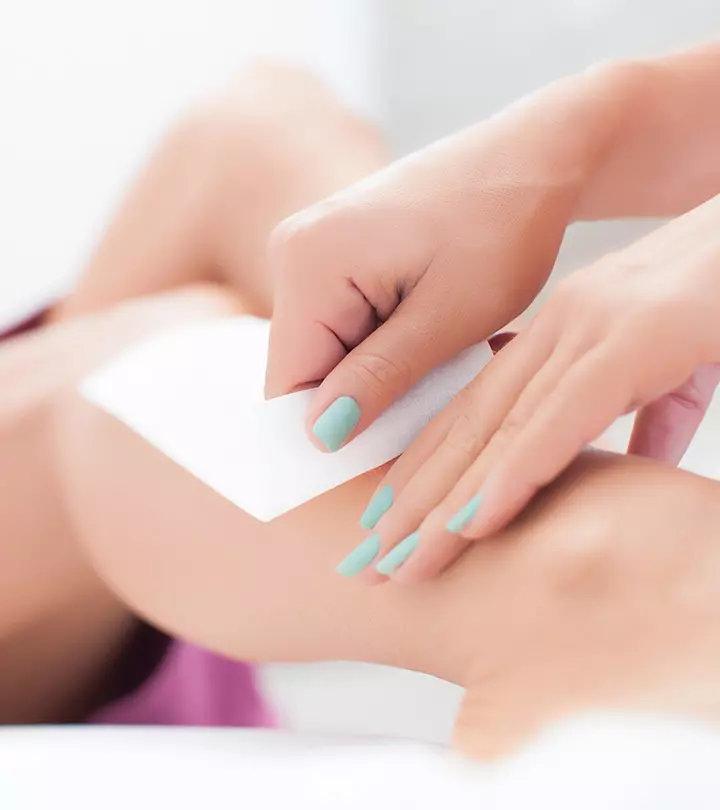



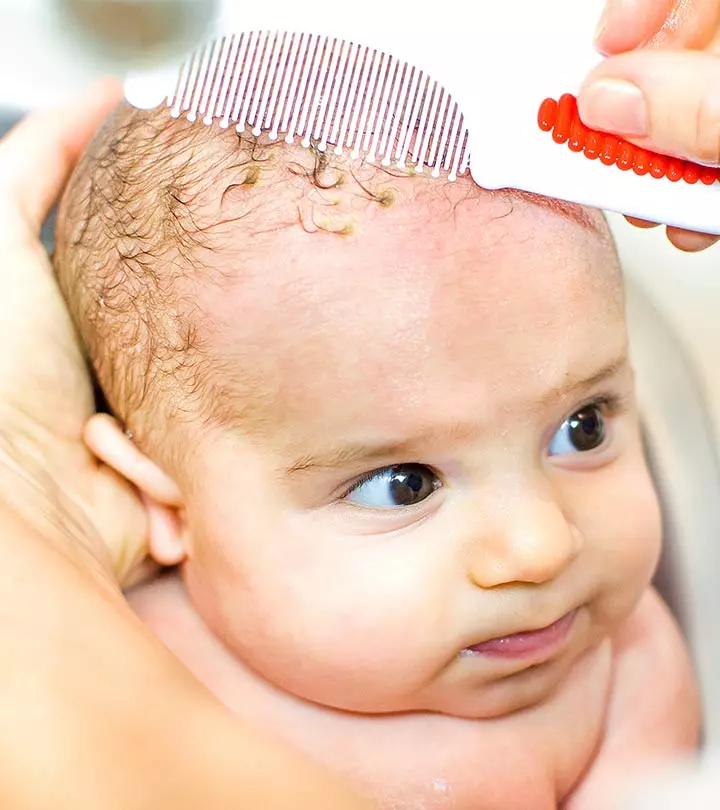

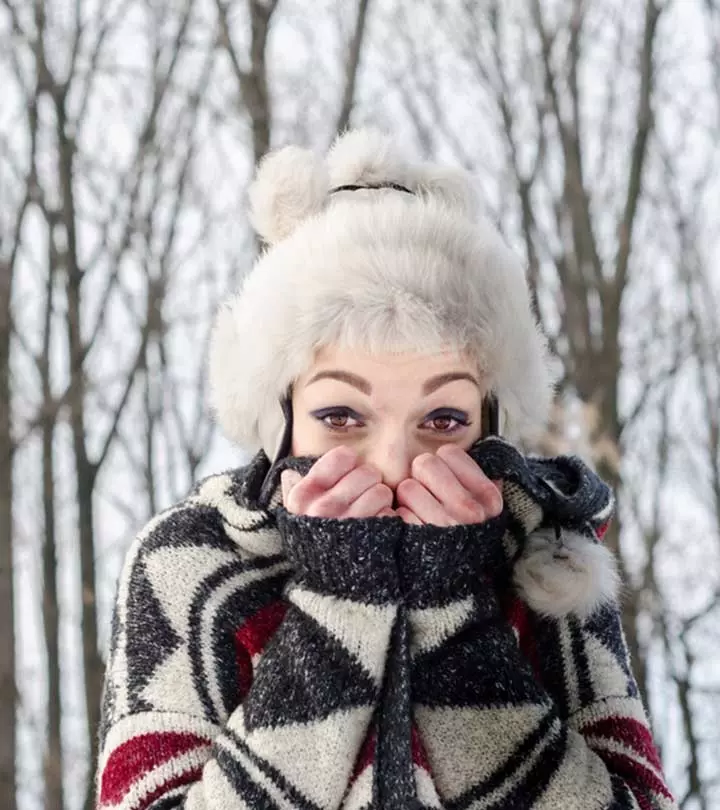

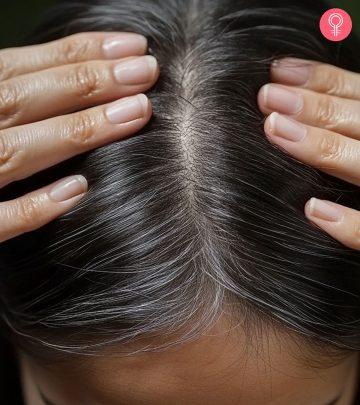






Community Experiences
Join the conversation and become a part of our empowering community! Share your stories, experiences, and insights to connect with other beauty, lifestyle, and health enthusiasts.